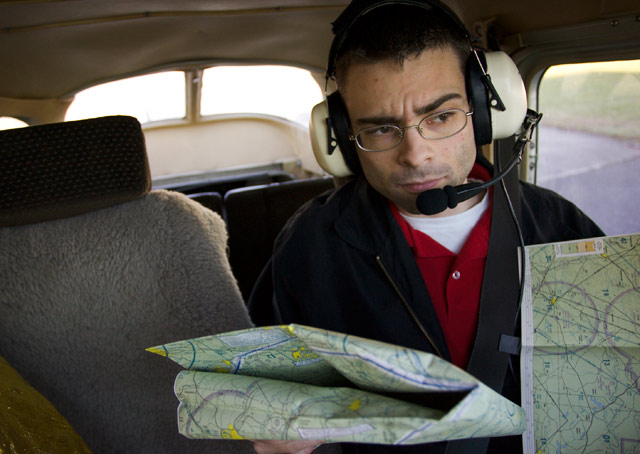 How would you react to looking down while flying a cross-country and seeing an apparently uncharted airport below? Would you make a mental note to alert the chart makers to this surprising development? Or would you take a more skeptical view of the situation?
How would you react to looking down while flying a cross-country and seeing an apparently uncharted airport below? Would you make a mental note to alert the chart makers to this surprising development? Or would you take a more skeptical view of the situation?
How you interpret what you see may be related to your state of mind at the time the unexpected aerodrome—or any feature that doesn’t seem to belong where you see it—appears. When a student pilot on a first solo cross-country spotted an airport that didn’t seem to belong down there, complacency prevented the recognition of a navigational error—and even abetted the student in fabricating a plausible explanation for the airport’s unexpected appearance.
At that moment, "I thought I had happened upon an uncharted crop dusting airport so I did not make a course correction," the pilot explained in a narrative filed with the Aviation Safety Reporting System, submitted after the flight required assistance from air traffic control to get down safely.
When you learned visual navigation methods, a reassuring aspect of the training was that you never had to put all your eggs in one basket; if there ever was any uncertainty about your position based on visual checkpoints, it might be possible to verify your flight’s progress by other means such as establishing your position relative to one or more navaids. (You can chart your location quickly by finding your position on radials from two VORs. Your aircraft will be located at the point where they intersect.)
Don’t wait until you think you are off course before using multiple methods of establishing your position. On your next cross-country, take time after identifying a well-chosen visual checkpoint (and giving your groundspeed a check) to establish your position relative to a nearby VOR. You should jot down the correct radial on your flight log during your preflight planning, to reduce cockpit workload, and as a reminder to perform the position check.
Confirming your position as a matter of course is a fun exercise that will sharpen your situational awareness and increase your ability to use the navigation tools the air traffic system provides. Doing so will also serve as an early warning of any off-course drift—quickly providing you with the information you need to get back on track with minimum consumption of time, and fuel.



